Steam Trading Cards Are Good, But They Should Be Better

Digital distribution network Steam recently rolled out a new way to connect to its audience with sets of collectible trading cards. After a short Beta period with only a few eligible games, such as Portal 2 or the online multiplayer feature Dota 2, the public can now enjoy the released version with a dozen more titles. Moreover, the company has vowed to update sets twice a week, providing a fresh batch of content and more chances to collect.
While things started pretty rough in the Beta, several changes and polishes have been driving up the marketability of this new activity. However, it's also this focus on driving more and more funds directly to Steam that is still the most prominent of elements of the trading card business on Valve's platform. Make no mistake: Steam trading cards are most certainly a business and not implemented for the user's enjoyment.
Gotta Catch ‘Em All
Starting out a collection is easy enough. Simply begin to play games. For each eligible title, gamers receive a certain card drop amount. For instance, fighting for survival in Don't Starve allows for 3 of these goods to be yielded during playthroughs. Periodically, a small notification will pop up on the side of the screen, mentioning that a new item has arrived in the personal inventory. Play can continue uninterrupted or it's possible to check the bounty in the Steam hub immediately.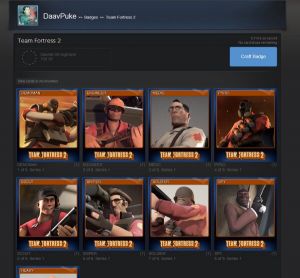
Cards are handed out at random and it's feasible to procure the same one several times, instead of a differing object each turn. In Don't Starve's instance, there is a maximum of 3 unique cards to be had out of a needed 5 drops. As there are several suitable titles in the trading system now, setting up a mini-collection of a shiny poster here and there won't be all too difficult. Some old purchases might have to be revisited, since cards aren't retroactively put to playtime, but it shouldn't be a cause for too much worry. On average, gaining the full amount of items for one game takes in between 2 and 5 hours. That's easy.
Mine! Craft!
Amassing a random bunch of cards sounds like fun already, certainly as some rare foils can be snagged for the truly lucky ones. However, the real enjoyment begins once a full set is achieved. When all cards from a game are collected, a prompt will appear above that bundle, which allows users to craft a badge. It just takes one little click to perform and after a quick spin, our spoils are fused into a whole for a satisfying payoff.
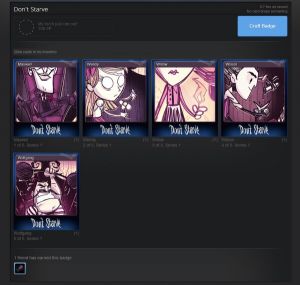
Aside from just owning some new bragging rights, badge crafting also earns players rewards. Things like profile backgrounds allow owners to customize their board with a nice depiction of a Team Fortress Scout or wild dogs emerging from the screen. Special emoticons can be used in the Steam chat, once obtained, which will create envy in the local social circles. Not unimportantly, a chance exists to receive timed discount coupons for another game. These can wildly vary in scope, but it would surely be amazing to score that title on your wish list for half the price, just by crafting. Finally, each badge contributes to a player level, which will stack further rewards, like higher drop rates. So far, life is good.
A Crack In Time
Having access to this splendor is a boon for users and Steam alike. Gamers want more cards, so they'll play more on the platform and with that comes more traffic, more activity and so on. Being able to score some loot urges players to get playing or makes it desirable to revisit an old flame. However, after a few sets are assembled, there will be some flaws that start becoming more noticeable.
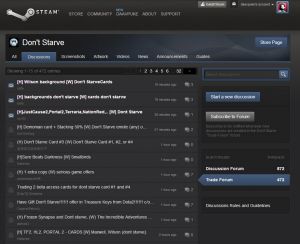
As mentioned, only half of a full lot can be granted through playing. Worse yet, eligible free-to-play games may be accessible to all, but in order to secure any rewards from them, gamers are restricted to a paying a certain amount. No money down on a free ride means no free loot from that title. Whichever the choice may be, on the user end of things, progress will always come short at about halfway and realistically even further behind than that. For one or two badges, it's justifiable to trade out some undesired specimens, but even then it's not possible to regain any drops. Once cards of a particular group are gone, they stay gone until bartered back. Such bargains are mostly only feasible by auxiliary means.
Oh no, Soylent Green Is Free-To-Play!
Perhaps in an insidious manner, Valve has used the trading card element to skew the free-to-play model into a scattered and obfuscated pay scheme that is accepted by its community, instead of scorn. Obtaining cards doesn't immediately look like it's urging people into financial options, but it's most definitely present.
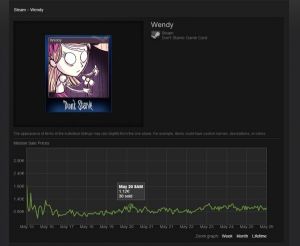
A marketplace is set up where trades are made for Steam wallet cash. Prices for cards are held up with supply and demand. It's the easiest way to complete sets, but also a reference sheet as to an article's worth. On the other hand, socialites can exchange games in their inventory with others for cards. My personal experience landed me a contact with a power trader, eager to add titles to their collection. This event was so similar to eBay's model that I was asked to submit a positive profile feedback and they in turn used analogous “A+ recommendation” jargon. Understandably, this model can easily be turned into a comparable, profit-driven carousel like gold farming, item markets and profile selling in other free-to-play titles. Oh, not unimportantly: Whatever the direction, the main pivot of the idea runs on monetization. Wallets, free-to-pay, coupons or direct game purchases all circle back to Valve.
Drop The Beat, Beat The Drop
The main issue right now with this design is finite drop rates. This rigid format denies the possibility of a decent collection without resorting to elaborate and almost always financial alternatives. Since its implementation, Steam has instated a booster pack element that yields a few extra cards, but this remains too uncertain. Boosters are handed to random users and its ratio is hidden, so there's no way of telling just how much playtime is put to good use. It is, however, a decent jump off point.
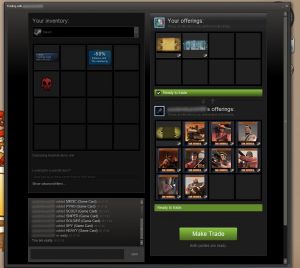
One way to overcome the blockage would be to renew the reward system at intervals, which would no longer force the community's hand. This could be done by letting dozens of gameplay hours drop an additional card or by using a real time setting, which renews every few weeks. Additionally, higher Steam levels could incrementally make this time go down, urging people to continue their effort. There is a solid basis in place to weed out the now nefarious execution. It would still run on monetization for those unable or unwilling to commit to vast efforts, while at the same time not punishing fans of specific titles who would gladly work up a sweat for their trinkets.
Hats Off To Valve
In its concept, Steam trading cards hold within them the potential to be beneficial to all parties. More than just an “achievement nouveau,” badges could bring the community that much closer together by showing off personal interests on profiles. Combined with the platform's new activity feed and their other settings, it may become somewhat of a social media happening like Facebook, but for gaming. Gaining experience for Steam levels has even started installing auxiliary rewards for things such as community activities and big game libraries. Extended to playtimes, achievement milestones and so on, it could organically complement usage of the program.
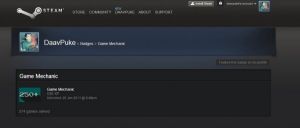
However, this isn't Valve's first foray into community building. Its biggest example to date is the troubled child that is Steam Greenlight. While less directly monetized, this indie approval process is also mostly left to wallow in its own discrepancies of popularity contests and PR-backed campaigns. That may be a bad omen as to the growth possible for the card scheme. Communities shouldn't rely on a survival of the fittest design, but include all walks of life. For this trading element to be an asset, some tweaks will need to be done to lower that financial threshold and welcome one and all.

No comments yet. Tell us what you think to be the first.